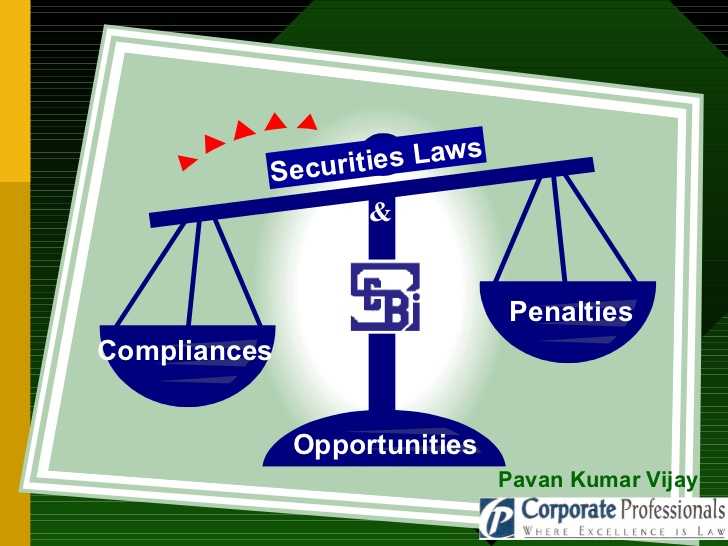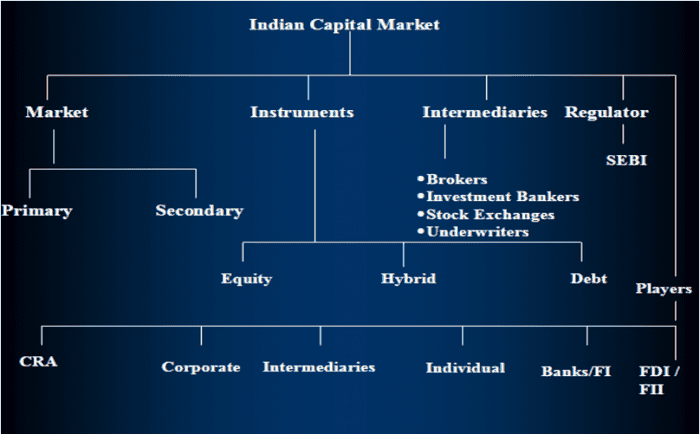
Functional Report of SEBI – HSC Project Maharashtra Board
INTRODUCTION :
The Securities and Exchange Board of India was established on April 12, 1992, by the provisions of the Securities and Exchange Board of India Act, 1992.
SEBI is managed by six members – one chairman (nominated by Central Government), two members (officers of central ministries), one member (from RBI), and the remaining two members appointed by the Central Government.
Preamble
The Preamble of the Securities and Exchange Board of India describes the essential functions of the Securities and Exchange Board of India as”…to protect the interests of investors in securities and to promote the development of, and to regulate the securities market and for matters connected in addition to that or incidental to it.”
Establishment of SEBI
The Securities and Exchange Board of India was established on April 12, 1992, by the provisions of the Securities and Exchange Board of India Act, 1992.
These Guidelines have been issued by the Securities and Exchange Board of India under Section 11 of the Securities and Exchange Board of India Act,1992. (a) These Guidelines may be called the Securities and Exchange Board of India (Disclosure and Investor Protection) Guidelines, 2000. (b) These Guidelines shall come into force from the date specified by the Board.
AIMS AND OBJECTIVES :
To understand how SEBI works.
The overall objectives of SEBI are to protect the interest of investors and to promote the development of stock exchange and to regulate the activities of the stock market. The objectives of SEBI are:
- To monitor the actions of a stock exchange.
- To protect the rights of investors and ensuring safety to their investment.
- To prevent fraudulent and malpractices by having the balance between self-regulation of business and its statutory regulations.
- To regulate and develop a code of conduct for intermediaries such as brokers, underwriters, etc.
METHOD AND METHODOLOGY :
Research Methodology refers to the search of knowledge .one can also define research methodology as a scientific and systematic search for required information on a specific topic. The word research methodology comes from the word “advanced learner’s dictionary meaning of research as a careful investigation or inquiry primarily through analysis for new facts in my branch of knowledge; for example, some author has to define research methodology as a systematized effort to gain further understanding
Primary data collection:
In dealing with the real-life problem, it is often found that data at hand are inadequate, and hence, it becomes necessary to collect data that is appropriate. There are several ways of managing the relevant data which differ considerably in the context of money costs, time and other resources at the disposal of the researcher
Through personal interviews:-
A rigid procedure was followed, and we were seeking answers to many pre-conceived questions through personal interviews.
Through questionnaire:-
Information to find out the investment potential and goal was found out through surveys.
Through Tele-Calling:-
Information was also taken through telephone calls.
Secondary sources of data:
The secondary sources of data are used. (Internet, magazine, books, journals)
Also, Check – Effects On Purchasing Power Of A Customer Due To Discount
DETAIL REPORT OF PROJECT :
Initially, SEBI was a nonstatutory body without any statutory power. However, in 1995, the SEBI was given additional legislative authority by the Government of India through an amendment to the Securities and Exchange Board of India Act, 1992. In April 1988, the SEBI was constituted as the regulator of capital markets in India under a resolution of the Government of India.
The SEBI is managed by its members, which consists of the following:
- The Union Government of India nominates the chairman.
- Two members, i.e., Officers from the Union Finance Ministry.
- One member of the Reserve Bank of India.
- Union Government of India nominates the remaining five members; out of them, at least three shall be whole-time members.
The SEBI performs functions to meet its objectives. To achieve three goals, SEBI has three essential features. These are:
- Protective services
- Developmental functions
- Regulatory functions.

Functions Of SEBI:
Protective Functions of SEBI:
These functions are performed by SEBI to protect the interest of the investor and provide the safety of the investment.
As protective functions, SEBI performs the following features:
- It Checks Price Rigging: Price rigging refers to manipulating the prices of securities with the primary objective of inflating or depressing the market price of securities. SEBI prohibits such practice because this can defraud and cheat the investors.
- It Prohibits Insider trading: Insider is any person connected with the company, such as directors, promoters, etc. These insiders have sensitive information which affects the prices of the securities. This information is not available to people at large. Still, the insiders get this privileged information by working inside the company. If they use this information to make a profit, then it is known as insider trading, e.g., the directors of a company may know that the company will issue Bonus shares to its shareholders at the end of the year. They purchase shares from the market to make a profit with a bonus issue. This is known as insider trading. SEBI keeps a strict check when insiders are buying securities of the company and takes strict action on insider trading.
- SEBI prohibits fraudulent and Unfair Trade Practices: SEBI does not allow the companies to make misleading statements that are likely to induce the sale or purchase of securities by any other person.
- SEBI undertakes steps to educate investors so that they can evaluate the securities of various companies and select the most profitable securities.
- SEBI promotes fair practices and code of conduct in the security market by taking the following steps:
(a) SEBI has issued guidelines to protect the interest of debenture-holders wherein companies cannot change terms in a midterm.
(b) SEBI is empowered to investigate cases of insider trading and has provisions for stiff fines and imprisonment.
(c) SEBI has stopped the practice of making a preferential allotment of shares unrelated to market prices.
Developmental Functions of SEBI :
These functions are performed by the SEBI to promote and develop activities in the stock exchange and increase the business in the stock exchange. Under developmental categories, the following services are performed by SEBI:
- SEBI promotes the training of intermediaries of the securities market.
- SEBI tries to support activities of stock exchange by adopting a flexible and adaptable approach in the following way:
- SEBI has permitted internet trading through registered stock brokers.
- SEBI has made underwriting optional to reduce the cost of the issue.
- The even initial public offer of the primary market is permitted through the stock exchange.
Regulatory Functions of SEBI:
These functions are performed by SEBI to regulate the business in the stock exchange. To monitor the activities of the stock exchange, the following services are implemented:
- SEBI has framed rules and regulations and a code of conduct to regulate intermediaries such as merchant bankers, brokers, underwriters, etc.
- These intermediaries have been brought under the regulatory purview, and private placement has been made more restrictive.
- SEBI registers and regulates the working of stockbrokers, sub-brokers, share transfer agents, trustees, merchant bankers, and all those who are associated with the stock exchange in any manner.
- SEBI registers and regulates the working of mutual funds etc.
- SEBI regulates the takeover of the companies.
- SEBI conducts inquiries and audits of stock exchanges.
The Organisational Structure of SEBI:
- SEBI is working as a corporate sector.
- Its activities are divided into five departments. An executive director heads each department.
- The head office of SEBI is in Mumbai, and it has a branch office in Kolkata, Chennai, and Delhi.
- SEBI has formed two advisory committees to deal with primary and secondary markets.
- These committees consist of market players, investors associations, and eminent persons.
Objectives of the two Committees are:
- To advise SEBI to regulate intermediaries.
- To advise SEBI on an issue of securities in the primary market.
- To advise SEBI on disclosure requirements of companies.
- To advise of changes in the legal framework and to make the stock exchange more transparent.
- To advise on matters related to the regulation and development of the secondary stock exchange.
These committees can only advise SEBI, but they cannot force SEBI to take action on their advice.
ANALYSIS OF DATA :
With the growth in the dealings of stock markets, a lot of malpractices also started in stock markets such as price rigging, ‘unofficial premium on a new issue, and delay in delivery of shares, violation of rules and regulations of the stock exchange and listing requirements. Due to these malpractices, the customers started losing confidence and faith in the stock exchange. So the government of India decided to set up an agency or regulatory body known as the Securities Exchange Board of India (SEBI).
SEBI was set up with the primary purpose of keeping a check on malpractices and protect the interest of investors. It was set up to meet the needs of three groups.
- Issuers:
For issuers, it provides a marketplace in which they can raise finance reasonably and efficiently.
- Investors:
For investors, it provides protection and supply of accurate and correct information.
- Intermediaries:
For intermediaries it provides a competitive professional market.
SEBI has three functions rolled into one body: quasi-legislative, quasi-judicial, and quasi-executive. It drafts regulations in its legislative capacity, it conducts an investigation and enforcement action in its executive function, and it passes rulings and orders in its judicial position. Though this makes it very powerful, there is an appeals process to create accountability. There is a Securities Appellate Tribunal, which is a three-member tribunal and is presently headed by a former Chief Justice of a High court -Mr. Justice N.K.Sodhi. A second appeal lies directly to the Supreme Court.SEBI has enjoyed success as a regulator by pushing systemic reforms aggressively and successively. SEBI has been active in setting up the regulations as required under the law.SEBI has also been instrumental in taking quick and practical steps in light of the global meltdown and the Satyam fiasco. It had increased the extent and quantity of disclosures to be made by Indian corporate promoters. More recently, in light of the global meltdown, it liberalized the takeover code to facilitate investments by removing regulatory structures. In one such move, SEBI has increased the application limit for retail investors to Rs 2 lakh, from Rs 1 lakh at present.
Powers of SEBI – Securities and Exchange Board of India
- For the discharge of its functions efficiently, SEBI has been invested with the necessary skills, which are:
- To approve by-laws of stock exchanges.
- To require the stock exchange to amend their by-laws.
- Inspect the books of accounts and call for periodical returns from recognized stock exchanges.
- Inspect the books of accounts of a financial intermediary.
- Compel individual companies to list their shares in one or more stock exchanges.
- Levy fees and other charges on the intermediaries for performing its functions.
- Grant license to any person to deal in certain areas.
- Delegate powers exercisable by it.
- Prosecute and judge the violation of specific provisions of the Companies Act directly.

CONCLUSION :
The Capital Market Regulator, SEBI, has carefully developed proper stability mechanisms to keep the Market functioning with stability and sustainability. There are difficulties, but the Capital Market Regulator devises careful working strategies to overcome them. Such plans come in the form of rules, regulations, and innovative market reforms. SEBI has been granted powers by the Law Courts and the Government of India, which helps its machinery to function as expected.
SEBI is very much engaged in the education of investors and the careful training of all Capital Market participants. This is the source of stability and sustainability in the Indian Capital Market. The situation of the Indian Capital Market is evidence of the fact that investors’ interest is well protected. They should have confidence in the market and invest without fear of abnormal or excess losses.
DISCUSSION :
After discussing this topic with my friends, we all believed that SEBI is helping India to achieve great heights. It protects the investors and educates them carefully for Capital market participants.
YOUR OPINION/ SUGGESTION :
I believe that SEBI needs to be vested with more powers; among this mention may be made of the following important ones:
- To monitor the working of stock exchanges effectively.
- To insist on companies for the supply of extensive information regularly.
- To penalize members of stock exchanges who were found to violate securities laws.
- To debar wrong-does from any activity in the stock market and impose on the civil penalties and initiate criminal proceedings.
- To make rules about the manipulative practices.
- To move the court for checking insider trading
ACKNOWLEDGMENT :
My profound gratitude to all the faculty members of the Department, for their timely assistance and encouragement throughout my research work.
I duly acknowledge the encouragement and support of the research scholars in the department, and all my colleagues and friends.
I thank my friends in the stock market and the management of broking firms who helped me with valuable data in time.
It gives me immense pleasure to take the opportunity to all the people who are directly or indirectly involved in the completion of my project based on Functional report of SEBI
With deep reverence, I offer my deepest gratitude _____, without whom this project could not have been fulfilled.
Lastly, I thank Almighty, my parents, family members, friends, and teachers for their constant encouragement and support, without which this project would not be possible.
Name of School/College
BIBLIOGRAPHY / REFERENCE :
- Wikipedia
- SEBI official website
In order to download the PDF, You must follow on Youtube. Once done, Click on Submit
Follow On YoutubeSubscribed? Click on Confirm
Download Functional Report of SEBI – HSC Project Maharashtra Board PDF







Thanks bro …… You are awesome
What did u write for need and importance??
Nice …..
Very nice cooperation
Good thing
Its the best website for projects
Your projects are awesome
Its helpful for website for students
Nic sir